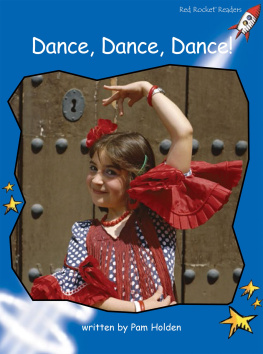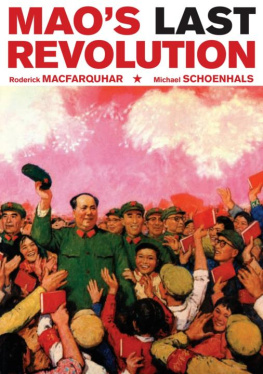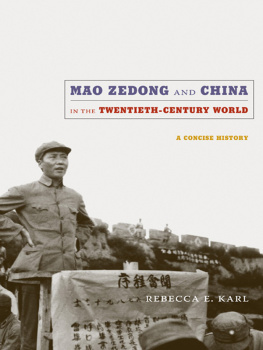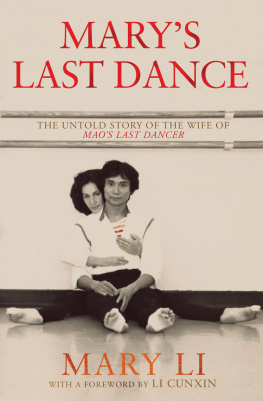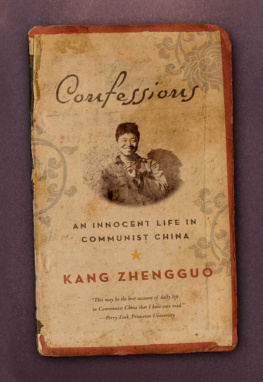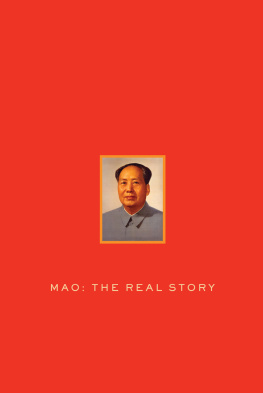Copyright 2003 by Li Cunxin
All rights reserved. You may not copy, distribute, transmit, reproduce or otherwise make available this publication (or any part of it) in any form, or by any means (including without limitation electronic, digital, optical, mechanical, photocopying, printing, recording or otherwise), without the prior written permission of the publisher. Any person who does any unauthorised act in relation to this publication may be liable to criminal prosecution and civil claims for damages
Quotations on pages 61 and 72 are from the songs I Love Beijing Tiananmen and We Love Chairman Mao (authors own translation)
A Short Note on the Long History of China written by Barbara Ker Wilson
First published in Australia in 2003 by Penguin Books Australia, a division of Pearson Australia Group Pty. Ltd.
Electronic edition published in October 2011
Published in the United States of America in 2008 by Walker Publishing Company, Inc. Distributed to the trade by Macmillan
For information about permission to reproduce selections from this book, write to Permissions, Walker & Company, 175 Fifth Avenue, New York, New York 10010
Library of Congress Cataloging-in-Publication Data
Li, Cunxin.
Maos last dancer / Li Cunxin.
p. cm.
First published in Australia in 2003 by Penguin Books Australia.
eISBN: 978 0 80272 812 8 (ebook)
1. Li, Cunxin, 1961 2. Ballet dancersChinaBiography. 3. DefectorsChinaBiography.
GV1785.L475A3 2008 792.8028092dc22 [B] 2008006104
Visit Walker & Companys Web site at
www.walkeryoungreaders.com
To the two special women
in my lifemy mother and my wife


CONTENTS
PART ONE
My Childhood
PART TWO
Beijing
PART THREE
The West

A WEDDING
QINGDAO,1946
On the day of her marriage, eighteen-year-old Reiqing sits alone in her village home. The wedding has been arranged by marriage introducers, as is the custom. Today the bride will meet her groom for the first time. She worries that her future husband will not be kindhearted and will not like her. But most of all she worries about her unbound feet. Bound feet are still in fashion. Little girls as young as five or six have to tuck four toes under the big toe and bandage them to stop the growth. The tighter the feet are bound the smaller they will become. The girls are so crippled they have to walk mostly on their heels. When Reiqings mother tried to bind her feet, she defied her and ran away. But what will her future husband and in-laws think about her unbound feet?
The groom is twenty-one. He leaves home before sunrise. Strong men are hired to carry two sedan chairs from his village to the brides. There are trumpets, cymbals, gongs, and bamboo flutes.
The bride is almost in a panic by the time her groom arrives. He wears a dark blue cotton gown and a tall hat. Silk flowers are pinned over his heart. He kneels, and kowtows three times, bowing his head all the way down to the floor, facing north, in the direction of the god of happiness.
A feast follows. The cost of the meal will break the brides familys finances. Many relatives and friends chip in, but the favors and debts will have to be repaid in years to come.
While the grooms people feast, the bride sits on her bed, her kang, away from everyone. A silk veil conceals her face. This is called the quiet sitting. She wears a long dark maroon gown, with pink silk flowers sewn onto it. She has no jewelry; her family is too poor.
Toward the end of the meal, the brides mother brings her a bowl of rice, a double-sided mirror, and ten pairs of red chopsticks. The bride has to eat three mouthfuls of rice, and spit the last mouthful into her mothers pocket. She has to keep some rice in her mouth to last all the way to her in-laws house before she can swallow, symbolizing that she will never starve along the entire journey of her life. Then she puts eight pairs of chopsticks into her mothers pocket. The remaining two pairs she keeps, the ones with chestnuts and dates tied on them. These symbolize the early arrival of sons.
The bride cannot stop shaking. Tears stream from her eyes. Soon she will become a wife and another familys daughter-in-law.
You silly girl, her mother says to her. Dont cry! Youre going to a family with enough food. Do you want to be poor for the rest of your life? She gently wipes her daughters tears and hugs her. Ill always miss you and love you. Take good care of your husband and hell take good care of you. Obey him and make him happy. Bear many sons. Be kind to your mother-in-law. She lowers the veil over her daughters face, and leaves, feeling nothing but pain.
The bride sobs quietly for the first half of her journey to the grooms village. She has never left home before. At the halfway point one of the carriers shouts, Flip your mirror! She takes the mirror shes been given and flips it over: now she should forget her past and look forward to the future.
When she arrives at the grooms gate, a metal bowl on the table in the center of the courtyard is flaming with fire. The groom gets out of his sedan chair and waits for his bride, her face still concealed by her veil as she is helped out of her chair by two of his sisters. They walk together toward the table while a local wise man reads aloud an ancient poem. Few people understand it because few of them have ever gone to school. The bride and groom kneel on two bamboo mats and kowtow. The groom then takes his brides hands and helps her up. She cannot see the flames from the bowl on the table, but she can feel the intense heat, symbolizing the fire of passion, the fire of love.
Before the bride takes her first step with her husband, the grooms fourth brother gently brushes the soles of her shoes with an iron filled with burning coals, to give her warmth from the end of her body right up to her heart. Led by her husband, she walks slowly toward the door, where there is a horses saddle. They have to cross over it together. The bride cannot see through her veil and is afraid she will trip. The saddle symbolizes hard times in life, which they will overcome together. Her husband squeezes her hand. Stop. Now lift your foot, he whispers. She pulls up her gown to her knees and steps over safely. But her heart sinks. She has shown her unbound feet to the entire world! Her in-laws will be disgusted.
Her husband feels her hesitation. Lets go to the kang, he says gently.
On one of the corners of the kang sits a triangular wooden box. Inside are different kinds of grains: wheat, corn, rice, millet, sorghum they represent the hope that the newlyweds will have plenty of food throughout their lives.
All day the bride has longed to remove her veil. Now she is afraid. Her husband may not like her appearance. Nervously she lifts her veil. For the first time in their lives they look at each other. The bride sees that her husband is handsome. There is something honest and humble about him too; he immediately captures her heart.
The groom, Li Tingfan, is stunned by his brides beauty. They sit there until their widen your heart noodles arrive, which symbolize acceptance of each others fortunes and faults. Then comes the warming your heart rice wine and they drink from each others cup with crossed arms.



